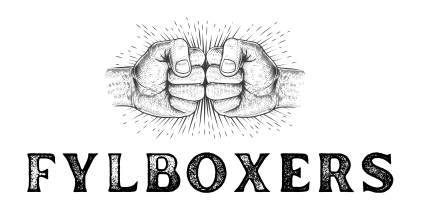In the world of pet ownership, understanding “What the Heckin Dog” just did or why they act a certain way can be both amusing and perplexing. This comprehensive guide aims to demystify common dog behaviors and provide insights into canine communication. For pet owners, dog lovers, and animal enthusiasts, knowing what the heck your dog is signaling is crucial for a harmonious relationship with your four-legged friend.
Dogs are expressive creatures that communicate through a mix of body language, vocalizations, and behaviors. However, without a grasp of these signals, misunderstandings can occur. This blog post will offer you a roadmap to better understanding your canine companion, from the science behind their behavior to tips for training and care.
Understanding What the Heckin Dog
The science behind dog behavior
Dog behavior is a fascinating field of study that blends biology, psychology, and environmental influences. Dogs have evolved alongside humans for thousands of years, leading to the development of behaviors that are specifically tuned to interpret and respond to human cues. Understanding this evolutionary bond helps explain why dogs are so adept at reading human emotions and commands.
The study of ethology, or animal behavior, reveals that dogs rely heavily on instinctual behaviors inherited from their wild ancestors. These behaviors can sometimes manifest in ways that seem puzzling to humans, such as why a dog might circle before lying down or why they might bury their toys. Recognizing these behaviors as natural instincts can help us better empathize with our pets.
How dogs communicate through body language and vocalizations
Dogs use a rich repertoire of body language and vocalizations to communicate. Key indicators include tail wagging, ear positioning, and facial expressions. For example, a wagging tail doesn’t always signify happiness; it can also indicate excitement or even agitation, depending on the speed and direction of the wag.
Vocalizations such as barking, whining, and growling also convey specific messages. A low growl may signal discomfort or warning, while a high-pitched bark could indicate excitement or a request for attention. Learning to interpret these signals accurately can deepen your relationship with your dog and enhance your ability to meet their needs.
Common behavioral issues in dogs and how to address them
Many pet owners encounter common behavioral issues such as excessive barking, chewing, or separation anxiety. These behaviors often result from unmet physical or emotional needs. Addressing them requires patience, consistency, and sometimes professional guidance.
For instance, if your dog is chewing furniture, it might be due to teething in puppies or boredom in adults. Providing appropriate chew toys and ensuring regular exercise can mitigate this behavior. Similarly, excessive barking can often be curbed through training that redirects attention and reinforces quiet behavior.
The Heckin Dog’s Health and Care
Essentials of dog nutrition and feeding guidelines
Feeding your dog a balanced diet is crucial for their health and longevity. High-quality commercial dog foods are typically formulated to meet the nutritional requirements of dogs, but it’s important to consider factors like age, size, and activity level when choosing a diet.
Fresh water should always be available, and treats should be given in moderation to avoid obesity. Regularly consulting with a veterinarian ensures that your dog’s dietary needs are met and allows for adjustments based on health changes.
Regular health check-ups and vaccinations
Routine veterinary check-ups are vital for maintaining your dog’s health. Annual vaccinations protect against common canine diseases and parasites. Additionally, regular blood tests and physical exams help detect potential health issues early, allowing for prompt treatment.
Maintaining a vaccination schedule is particularly important for preventing contagious diseases like rabies, distemper, and parvovirus. These vaccinations not only protect your dog but also help maintain public health safety.
Grooming needs and basic training tips
Grooming is more than just keeping your dog looking good; it’s essential for their well-being. Regular brushing reduces shedding and distributes natural oils, promoting a healthy coat. Bathing, nail trimming, and ear cleaning are also important aspects of grooming to prevent infections and discomfort.
Training, much like grooming, is an ongoing process. Teaching basic commands like “sit,” “stay,” and “come” establishes boundaries and enhances communication. Consistent training, reinforced with positive rewards, strengthens the bond between you and your dog.
Socializing Your Heckin Dog
The importance of early socialization
Early socialization is crucial for developing a well-adjusted dog. Exposing puppies to diverse environments, people, and other animals helps them build confidence and reduces the likelihood of fear-based behaviors in adulthood.
Puppy classes are a great way to introduce young dogs to social settings under controlled conditions. Ensuring that these early experiences are positive is key to making them effective.
Ways to socialize your dog with other pets and people
Socialization doesn’t stop at puppyhood. Continually exposing your dog to new situations and reinforcing positive interactions is important throughout their life. Parks, pet-friendly cafes, and organized playdates are excellent venues for socializing.
Structured activities like agility courses can also be beneficial, providing mental and physical stimulation while offering opportunities to interact with other dogs and handlers. Always monitor interactions to ensure they remain positive and intervene if your dog shows signs of discomfort.
How to recognize and address signs of anxiety in your dog
Anxiety in dogs can manifest through behaviors such as trembling, excessive panting, or destructive actions. Understanding the triggers—such as loud noises, unfamiliar environments, or being left alone—is crucial for addressing anxiety.
Desensitization and counterconditioning techniques, where the dog is gradually exposed to the anxiety trigger in a controlled way, can help. Consulting a professional trainer or veterinarian for severe cases is advisable to develop an effective management plan.
Training Your Heckin Dog
Basic obedience training and commands
Obedience training lays the foundation for a well-behaved dog. Start with basic commands like “sit,” “stay,” “down,” and “come.” These commands help establish control and safety in various situations.
Training sessions should be short and consistent, focusing on one command at a time to avoid overwhelming your dog. Positive reinforcement, using treats or praise, encourages your dog to repeat desired behaviors.
Positive reinforcement techniques for effective training
Positive reinforcement is a powerful training method that rewards dogs for displaying correct behavior. Unlike punishment, which can create fear and aggression, positive reinforcement fosters a trusting relationship between you and your dog.
Using treats, toys, or affection as rewards can motivate your dog and make training sessions enjoyable. Timing is important; the reward should immediately follow the desired behavior to reinforce the connection.
The benefits of continued training for your dog’s well-being
Training should continue throughout your dog’s life, not only to reinforce obedience but also to challenge their mental capabilities. Advanced training or learning new tricks provides mental stimulation and strengthens the emotional bond you share.
Regular training sessions can also prevent behavioral issues by keeping your dog engaged and focused. Incorporating training into daily routines, like walks or playtime, makes it a natural and ongoing part of your dog’s life.
The Heckin Dog’s Environment
Creating a safe and stimulating living space for your dog
A safe and stimulating environment is essential for your dog’s happiness and health. Providing a comfortable bed, safe toys, and appropriate chew items creates a welcoming home.
It’s important to dog-proof your home by securing hazardous items and removing small objects that could be swallowed. Ensuring that your dog has access to a quiet space where they can retreat when they need rest is also beneficial.
The importance of exercise and playtime for dogs
Exercise and play are vital for your dog’s physical and mental well-being. Regular walks, runs, or play sessions help burn off energy and reduce the risk of obesity and associated health issues.
Engaging in interactive games like fetch or tug-of-war fosters bonding and provides cognitive challenges for your dog. Varying activities keeps exercise fun and prevents boredom.
Tips for making travel and new environments comfortable for your dog
Travel and new environments can be stressful for dogs, but preparation can ease the process. Gradually acclimate your dog to car rides or travel crates well before a trip.
Bring familiar items like bedding or toys to provide comfort in unfamiliar settings. Maintaining a routine as much as possible helps your dog feel secure, even in new surroundings.
Conclusion
Navigating the world of dog ownership is a rewarding adventure filled with moments of joy, learning, and growth. By understanding “What the Heckin Dog,” you equip yourself with the tools to nurture a happy and healthy relationship with your pet. From recognizing behavioral cues to ensuring proper care and training, your efforts contribute to a fulfilling life for your dog.
For those eager to deepen their understanding, consider joining local dog training classes or online forums for continued learning. Engaging with fellow dog lovers can offer support, advice, and encouragement on your pet parenting journey.
FAQs
What does “What the Heckin Dog” mean?
“What the Heckin Dog” refers to the curiosity and surprise often experienced by pet owners when their dogs exhibit unexpected behaviors. It emphasizes the importance of understanding canine actions and signals.
How can I tell if my dog is happy?
Signs of a happy dog include a relaxed body posture, a wagging tail, bright eyes, and playful behavior. Happy dogs generally show interest in their surroundings and interact positively with people and other animals.
How often should my dog visit the vet?
Dogs should have at least an annual veterinary check-up. Puppies and senior dogs may require more frequent visits to monitor health changes and ensure vaccinations are up-to-date.
What’s the best way to train a dog?
Positive reinforcement is widely recommended as the best training method. Rewarding desired behaviors with treats, praise, or toys encourages repetition and strengthens the bond between dog and owner.
How can I socialize my shy dog?
Gradual exposure to different environments, people, and pets helps socialize a shy dog. Start with controlled settings, reward positive interactions, and slowly increase challenges as your dog becomes more comfortable.








